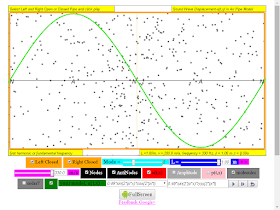Close Ends with Modeling
 |
Standing Wave in Pipe Model Mode = 1 Closed Ends
author: Juan M. Aguirregabiria, lookang, tina
author EJS: Francisco Esquembre
|
 |
Standing Wave in Pipe Model Mode = 2 Closed Ends
author: Juan M. Aguirregabiria, lookang, tina
author EJS: Francisco Esquembre
|
 |
Standing Wave in Pipe Model Mode = 3 Closed Ends
author: Juan M. Aguirregabiria, lookang, tina
author EJS: Francisco Esquembre
|
 |
Standing Wave in Pipe Model Mode = 4 Closed Ends
author: Juan M. Aguirregabiria, lookang, tina
author EJS: Francisco Esquembre
|
 |
Standing Wave in Pipe Model Mode = 5 Closed Ends
author: Juan M. Aguirregabiria, lookang, tina
author EJS: Francisco Esquembre
|
Close Ends
 |
| Standing Wave in Pipe Model Mode = 1 Closed Ends http://weelookang.blogspot.sg/2015/08/ejss-standing-wave-in-pipe-model.html run: Link1, Link2 download: Link1, Link2 source: Link1, Link2 author: Juan M. Aguirregabiria, lookang, tina author EJS: Francisco Esquembre |
 |
Standing Wave in Pipe Model Mode = 2 Closed Ends
author: Juan M. Aguirregabiria, lookang, tina
author EJS: Francisco Esquembre
|
 |
Standing Wave in Pipe Model Mode = 3 Closed Ends
author: Juan M. Aguirregabiria, lookang, tina
author EJS: Francisco Esquembre
|
 |
Standing Wave in Pipe Model Mode = 4 Closed Ends
author: Juan M. Aguirregabiria, lookang, tina
author EJS: Francisco Esquembre
|
 |
Standing Wave in Pipe Model Mode = 5 Closed Ends
author: Juan M. Aguirregabiria, lookang, tina
author EJS: Francisco Esquembre
|
Standing waves in a pipe
Let us consider a narrow pipe along the OX axis. Each end may be open or closed. The simulation will display the first 5 normal modes, which are
u(t,x) = A sin(n π x) cos(ω t + δ) when both ends are closed.
u(t,x) = A sin((n-1/2) π x) cos(ω t + δ) when the left end is closed and the right end open.
u(t,x) = A cos((n-1/2) π x) cos(ω t + δ) when the left end is open and the right end closed.
u(t,x) = A cos(n π x) cos(ω t + δ) when both ends are open.
Units are
Below you may choose the mode n = 1, ...,5,
In the lower animation you may see the evolution of the position x + u(t,x) of several points and a contour plot of p(t,x)
Optionally one can see the nodes where the displacement wave vanishes at all times.
Scale has been arbitrarily enhanced to make things visible; but keep in mind that we are considering very small displacements and pressure changes in a narrow pipe.
Put the mouse point over an element to get the corresponding tooltip.
Activities
Compute the position of the nodes for mode number n in the four considered cases.Use the simulation to check your calculation.
Which is the relationship between the displacement and pressure waves? How does it appears in the animation?
Author
This was an English translation of the Basque original for a course on mechanics, oscillations and waves.
It requires Java 1.5 or newer and was created by Juan M. Aguirregabiria with Easy Java Simulations (Ejs) by Francisco Esquembre. I thank Wolfgang Christian and Francisco Esquembre for their help.
It is now in JavaScript by lookang and tina. We also thank Wolfgang Christian and Francisco Esquembre for creating the wonderful authoring and modeling tool.
No comments:
Post a Comment